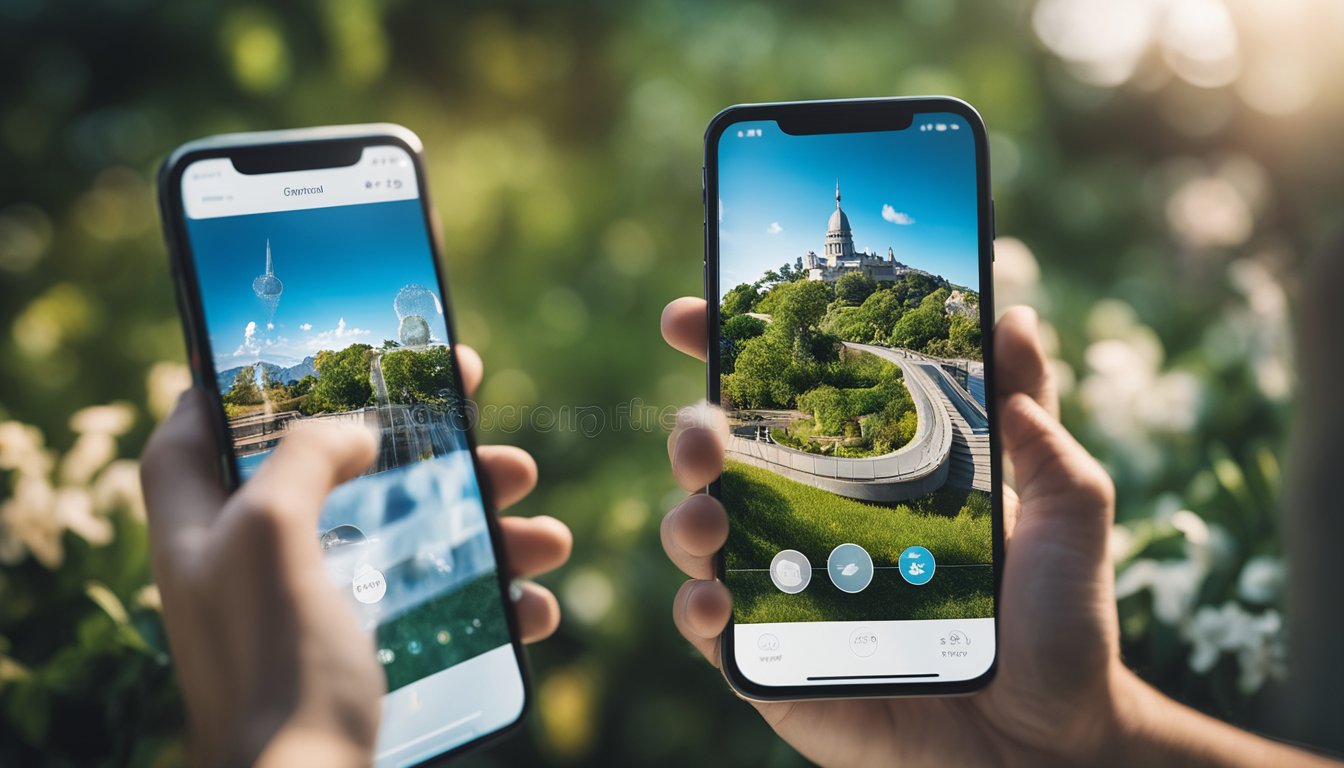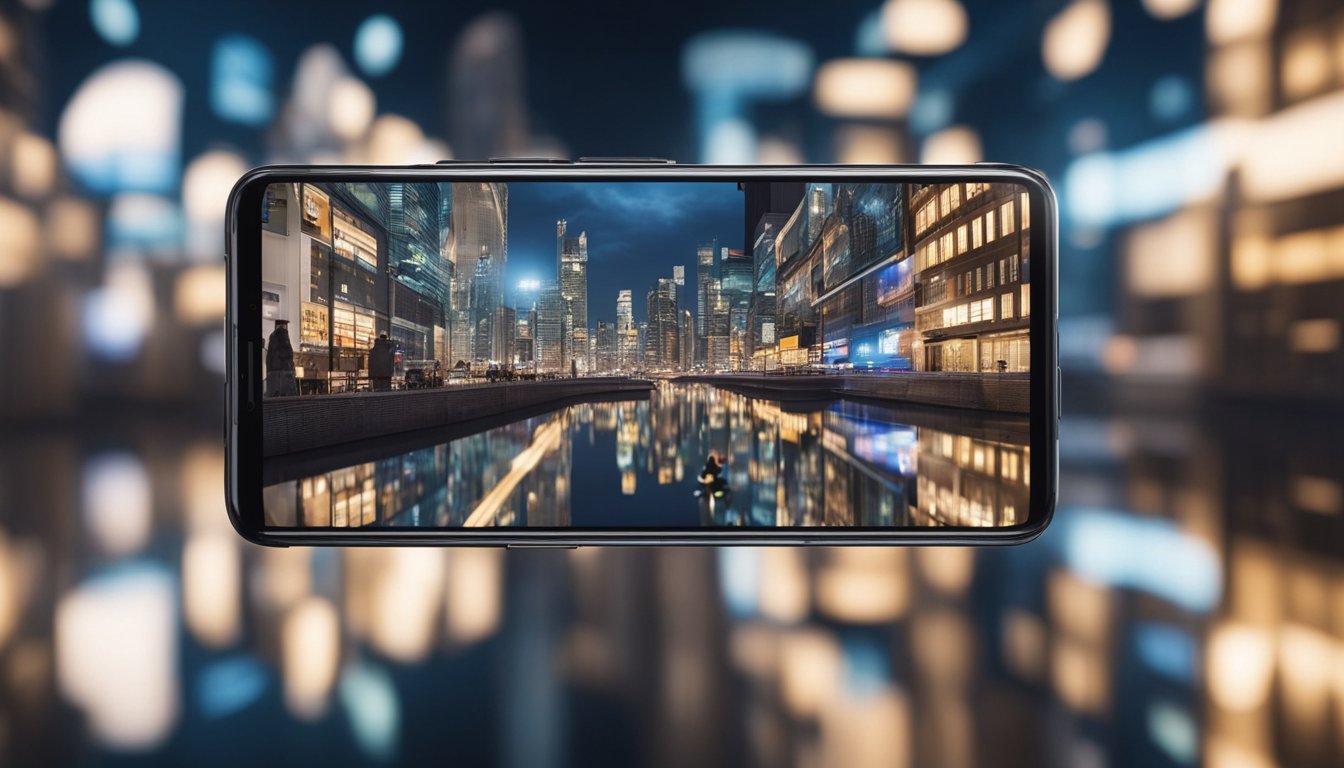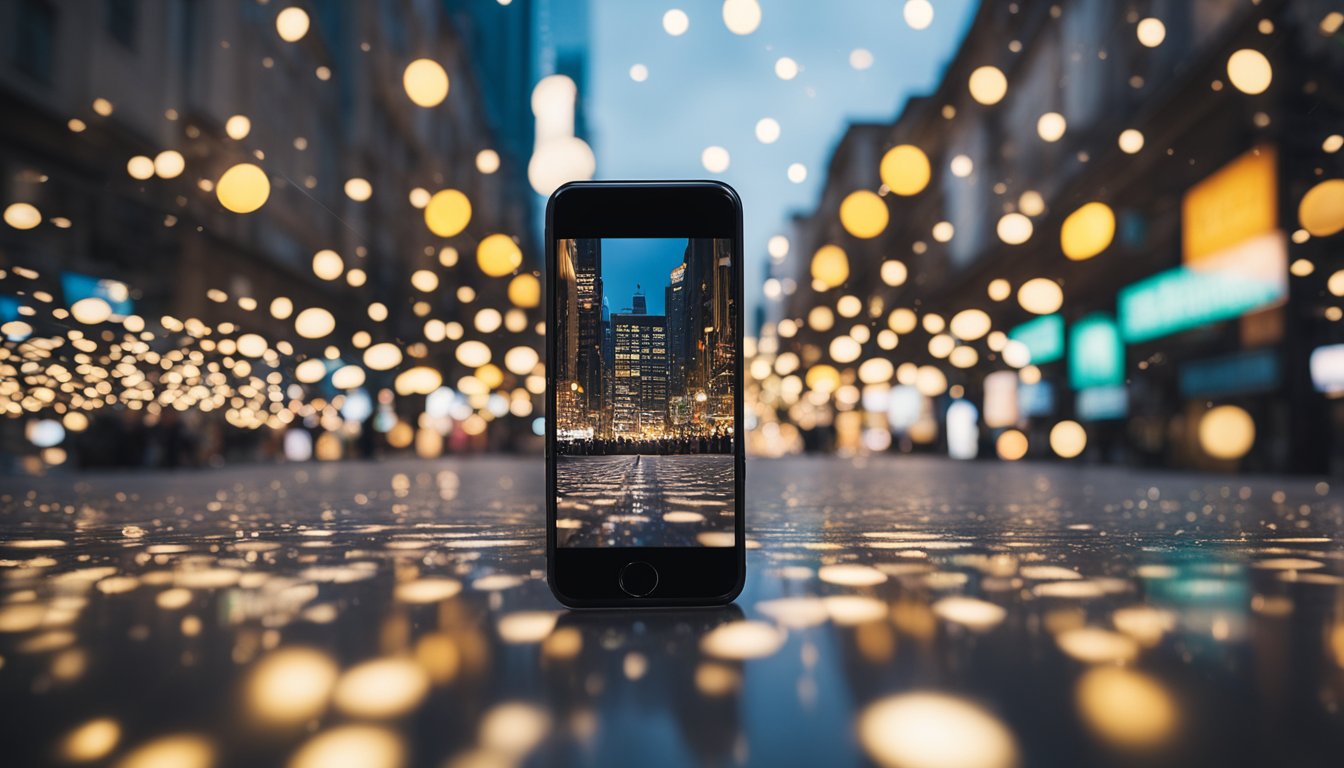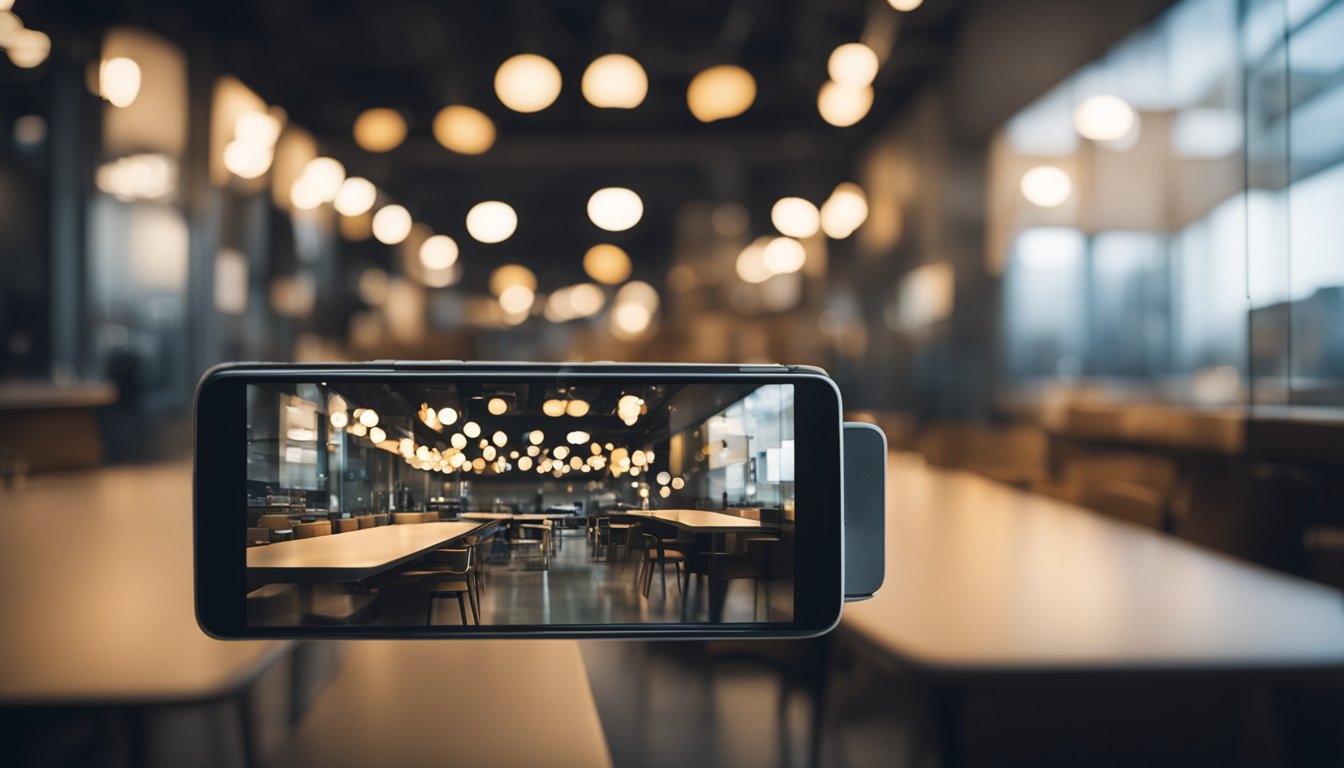Use Augmented Reality in Your Marketing Campaigns A Guide to Boosting Engagement and Sales
As marketing continues to evolve, businesses are constantly looking for new and innovative ways to engage with their target audience. One technology that has gained popularity in recent years is augmented reality (AR). AR allows consumers to interact with a brand's products or services in a unique and engaging way, creating a more memorable experience. In this article, I will explore the benefits of using AR in your marketing campaigns and provide examples of successful implementations.

Understanding Augmented Reality and Its Impact on Marketing AR is a technology that overlays digital content onto the real world, creating an interactive experience for users. It has the potential to transform the way businesses market their products and services, as it allows them to create immersive experiences that engage their target audience. By using AR, businesses can showcase their products in a way that is both informative and entertaining, making it easier for consumers to understand the benefits of their offerings.
Augmented Reality in Action: Case Studies Many businesses have already successfully implemented AR into their marketing campaigns. For example, IKEA's AR app allows users to see how furniture would look in their homes before making a purchase. Similarly, Sephora's AR app allows users to try on makeup virtually, making it easier for them to find the perfect product. These examples demonstrate how AR can be used to create a more engaging and interactive experience for consumers, ultimately leading to increased sales and customer satisfaction.
Key Takeaways
- Augmented reality can transform the way businesses market their products and services, creating immersive experiences that engage their target audience.
- Successful implementations of AR in marketing campaigns include IKEA's AR app and Sephora's AR app, which allow users to see how products would look in their homes and try on makeup virtually.
- By leveraging AR in their marketing campaigns, businesses can create a more memorable experience for consumers, ultimately leading to increased sales and customer satisfaction.
Understanding Augmented Reality and Its Impact on Marketing

As a marketer, I understand the importance of staying ahead of the curve when it comes to utilizing new technologies to enhance marketing campaigns. One such technology that has been gaining traction in recent years is augmented reality (AR).
AR involves overlaying digital content onto the real world, creating an interactive and immersive experience for the user. This technology has the potential to revolutionize marketing by providing customers with unique and engaging experiences that can increase brand awareness, loyalty, and ultimately, sales.
AR can be used in a variety of ways, from creating interactive product demonstrations to offering virtual tours of physical locations. With the rise of mobile devices and advancements in AR technology, it has become easier than ever to integrate AR into marketing campaigns.
In addition to providing customers with engaging experiences, AR can also provide valuable data to marketers. By tracking user interactions with AR content, marketers can gain insights into customer behavior and preferences, which can inform future marketing strategies.
While AR is still a relatively new technology, it has already been embraced by a number of forward-thinking companies. For example, IKEA's AR app allows customers to see how furniture will look in their home before making a purchase, while Pepsi Max used AR to create a memorable and interactive bus shelter advertisement.
In conclusion, AR has the potential to revolutionize marketing by providing customers with engaging and interactive experiences that can increase brand awareness and loyalty. As a marketer, it is important to stay up-to-date with new technologies like AR to stay ahead of the competition and provide customers with the best possible experiences.
Augmented Reality in Action: Case Studies

As augmented reality (AR) gains popularity, more and more brands are incorporating this technology into their marketing campaigns. Here are a few examples of companies that have successfully used AR to engage with their customers:
Pepsi - Super Bowl Halftime Show
In 2020, Pepsi used AR to create an interactive experience during the Super Bowl halftime show. Fans could scan a QR code on their Pepsi can to unlock an AR filter that allowed them to virtually "join" the halftime show performance. This campaign not only engaged fans but also helped Pepsi stand out among other Super Bowl advertisers.
Pokémon GO - AR Gaming
Pokémon GO, the popular mobile game, is a prime example of how AR can be used in gaming. The game uses the player's camera and GPS to create an immersive experience where players can catch virtual Pokémon in the real world. This combination of AR and gaming has been a huge success, with millions of players worldwide.
IKEA - AR Furniture Shopping
IKEA has incorporated AR into their shopping experience by allowing customers to preview furniture in their homes before making a purchase. The IKEA Place app uses AR to show customers what a piece of furniture would look like in their space, helping them make more informed buying decisions.
Sephora - AR Beauty Try-On
Sephora's Virtual Artist app uses AR to allow customers to try on makeup virtually. By scanning their face, customers can see what different makeup products would look like on them, making it easier to find the right shade and product for their skin tone and preferences.
StubHub - AR Event Preview
StubHub used AR to create an interactive experience for fans attending the Super Bowl in 2017. Fans could use their smartphones to scan a QR code on their ticket and see a 3D preview of the stadium, including the location of their seats and nearby amenities.
Timberland - AR Product Showcase
Timberland used AR to showcase their products in a unique way. Customers could scan a QR code on a Timberland tag to see a 3D model of the product and learn more about its features and materials.
Starbucks - AR Holiday Cup
Starbucks used AR to create an interactive experience for customers during the 2019 holiday season. By scanning a QR code on their holiday cup, customers could unlock an AR filter that brought their cup to life with festive animations.
Hyundai - AR Car Manual
Hyundai used AR to create an interactive car manual for the 2015 Genesis. By scanning a QR code in the car's manual, customers could see 3D models of different parts of the car and learn more about its features and functionality.
Mercedes - AR Car Configurator
Mercedes used AR to create an interactive car configurator for their GLA model. Customers could use their smartphones to see a 3D model of the car and customize it with different colors and features.
Uber - AR Ride Experience
Uber has been experimenting with AR to enhance the ride experience for customers. In 2018, they introduced an AR feature that allowed customers to see virtual pickup points and directions in the real world, making it easier to find their driver.
Snapchat - AR Filters
Snapchat is well known for its AR filters, which allow users to add fun and interactive effects to their photos and videos. Brands can also create sponsored filters to reach Snapchat's large user base and engage with them in a unique way.
In conclusion, AR can be a powerful tool for brands to engage with their customers in new and innovative ways. These case studies demonstrate the wide range of possibilities for AR in marketing campaigns, from interactive event experiences to virtual product previews.
Leveraging Augmented Reality for Marketing Success

As a marketer, I have found that leveraging augmented reality (AR) can be a powerful tool in creating engaging content that leaves a lasting impression on consumers. By using AR in marketing campaigns, businesses can create unique experiences that not only increase brand awareness but also drive sales and customer loyalty.
One of the key benefits of AR in marketing is that it allows brands to create experiential marketing campaigns that immerse consumers in a brand's products or services. For example, using AR technology, businesses can create virtual product demonstrations that allow customers to try out products before they buy them. This not only helps customers make informed purchase decisions but also creates lasting memories that can increase brand loyalty.
Additionally, AR can be used to create games and other interactive experiences that engage customers and keep them coming back for more. By creating fun and engaging experiences, businesses can increase brand value and create a sense of community around their brand.
Another benefit of AR in marketing is that it can be used across a variety of branding materials, including business cards, brochures, and other marketing collateral. By including AR elements in these materials, businesses can create a truly unique and memorable experience for customers.
Finally, AR can be used in social media marketing campaigns to create engaging content that drives brand awareness and customer engagement. By leveraging AR in social media, businesses can create viral campaigns that generate buzz and increase brand exposure.
In conclusion, leveraging AR in marketing campaigns can be a powerful tool in creating engaging content that drives brand value, sales, and customer loyalty. By creating unique and immersive experiences, businesses can create lasting memories that keep customers coming back for more.
Challenges and Future Prospects of Augmented Reality Marketing

As with any new technology, there are several challenges and future prospects associated with augmented reality (AR) marketing. While AR has the potential to revolutionize the way businesses interact with customers, it also presents unique challenges that must be addressed.
One of the biggest challenges is the cost of implementing AR technology. Glasses and other immersive devices can be expensive, and the investment required to create unique AR experiences can be significant. However, the buzz around the brand that can be generated by a successful AR campaign can make it a worthwhile investment.
Another challenge is customer satisfaction. While AR can create immersive and interactive experiences for customers, it can also be frustrating if it is not accessible or does not work properly. Ensuring that AR apps and experiences work seamlessly on a variety of mobile devices is crucial for customer satisfaction.
In the retail industry, AR can be used to create virtual fitting rooms and reduce returns by allowing customers to see how furniture or clothing will look in their homes before making a purchase. However, managing physical inventory and creating a virtual component can be challenging.
The auto industry is also exploring the use of AR to create interactive experiences for customers, but the cost of implementing AR technology in vehicles can be expensive. QR codes and augmented reality ads in magazines can also be used to create buzz around a brand, but there are concerns about market size and the potential for over-saturation.
In education, AR can be used to create immersive and engaging learning experiences, but there are challenges associated with creating effective AR content and ensuring that it is accessible to all students.
Overall, the future prospects of AR marketing are promising, but there are several challenges that must be addressed. As a managing director, I believe that businesses must carefully consider the costs and benefits of implementing AR technology and ensure that AR experiences are accessible and user-friendly for customers.
Frequently Asked Questions

How can augmented reality enhance customer engagement in marketing campaigns?
Augmented reality (AR) can enhance customer engagement in marketing campaigns by providing a unique and immersive experience for customers. AR allows businesses to create interactive and personalized experiences that can increase customer engagement and retention. By using AR, businesses can also provide customers with a better understanding of their products or services, leading to increased sales.
What are some successful examples of businesses using augmented reality in their marketing?
Several businesses have successfully used AR in their marketing campaigns. For example, Ikea's AR app allows customers to virtually place furniture in their homes before making a purchase. Sephora's AR app allows customers to try on makeup virtually, providing a personalized experience. Pokemon Go is another popular example of a successful AR marketing campaign that engaged millions of users worldwide.
What are the benefits of using augmented reality in digital marketing?
The benefits of using AR in digital marketing include increased customer engagement, improved brand awareness, and increased sales. AR can also provide businesses with valuable data on customer behavior and preferences, which can be used to improve marketing strategies and product development.
How does augmented reality impact consumer behavior in marketing?
AR can impact consumer behavior in marketing by providing a more personalized and immersive experience for customers. AR can also create a sense of urgency and excitement, leading to increased sales. Additionally, AR can provide customers with a better understanding of products or services, leading to increased trust and loyalty.
What are the potential drawbacks of using augmented reality in marketing campaigns?
Some potential drawbacks of using AR in marketing campaigns include the high cost of development and implementation, the need for specialized skills and equipment, and the potential for technical issues or glitches. Additionally, some customers may find AR experiences overwhelming or intrusive, leading to a negative impact on brand perception.
How can augmented reality be used to create immersive brand experiences for customers?
AR can be used to create immersive brand experiences for customers by providing personalized and interactive experiences that are tailored to the customer's preferences and needs. By using AR, businesses can create a sense of excitement and engagement, leading to increased brand loyalty and sales. AR can also be used to provide customers with a better understanding of products or services, leading to increased trust and confidence in the brand.

We are committed to delivering a new level of automation that will help organizations save time, money, and staffing resources.
 WRITE FOR US!
WRITE FOR US!
